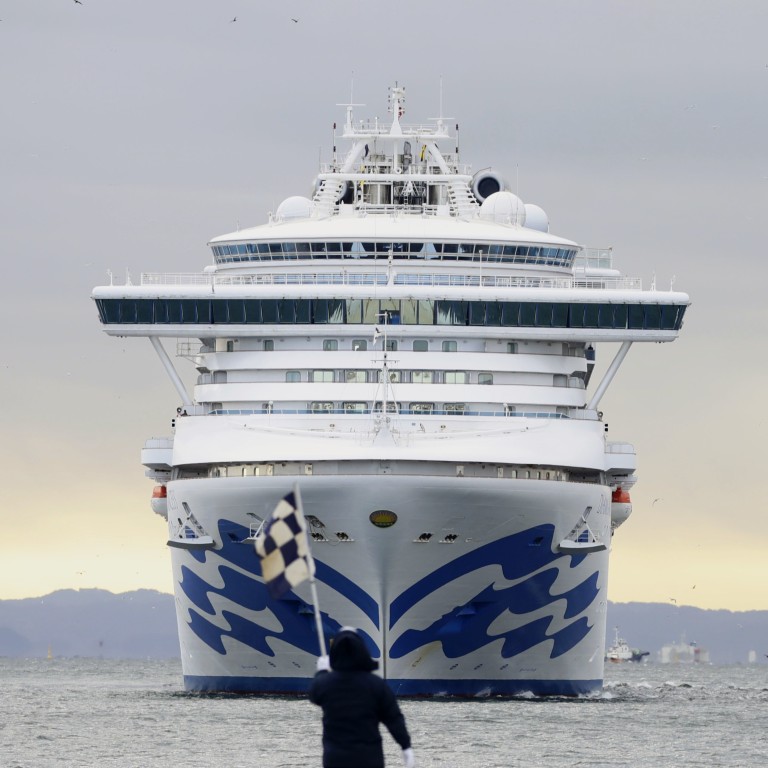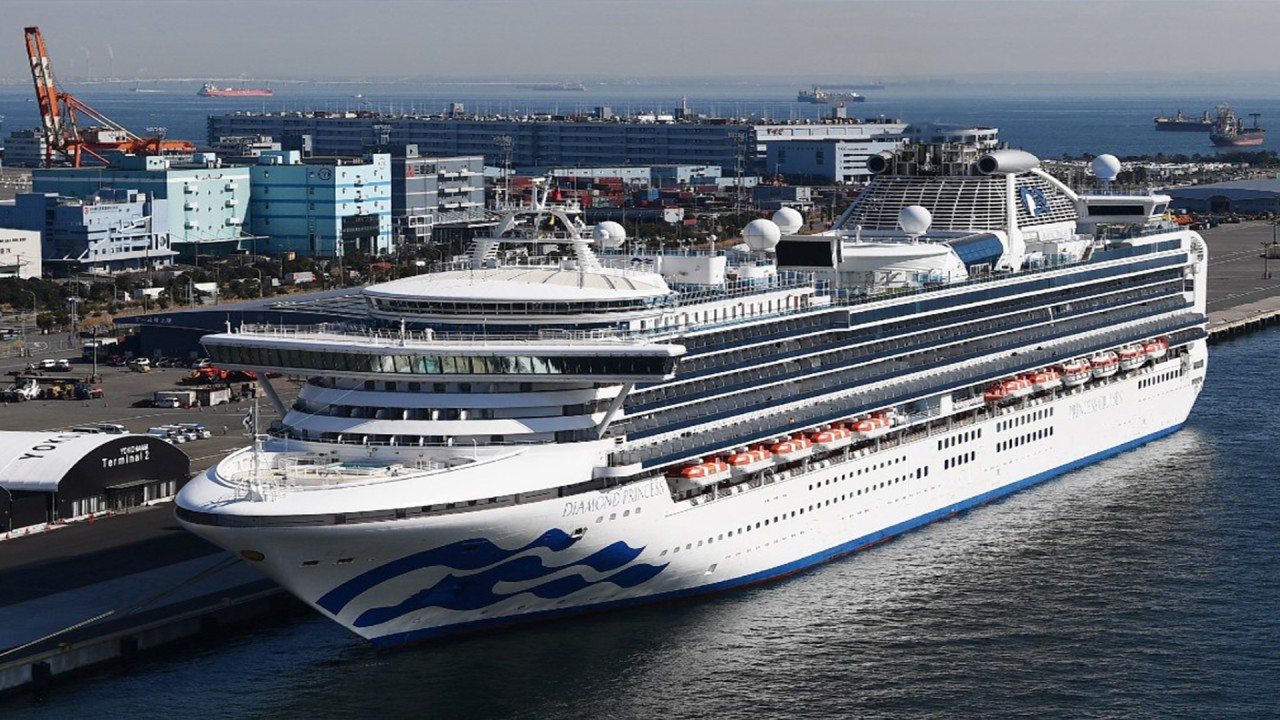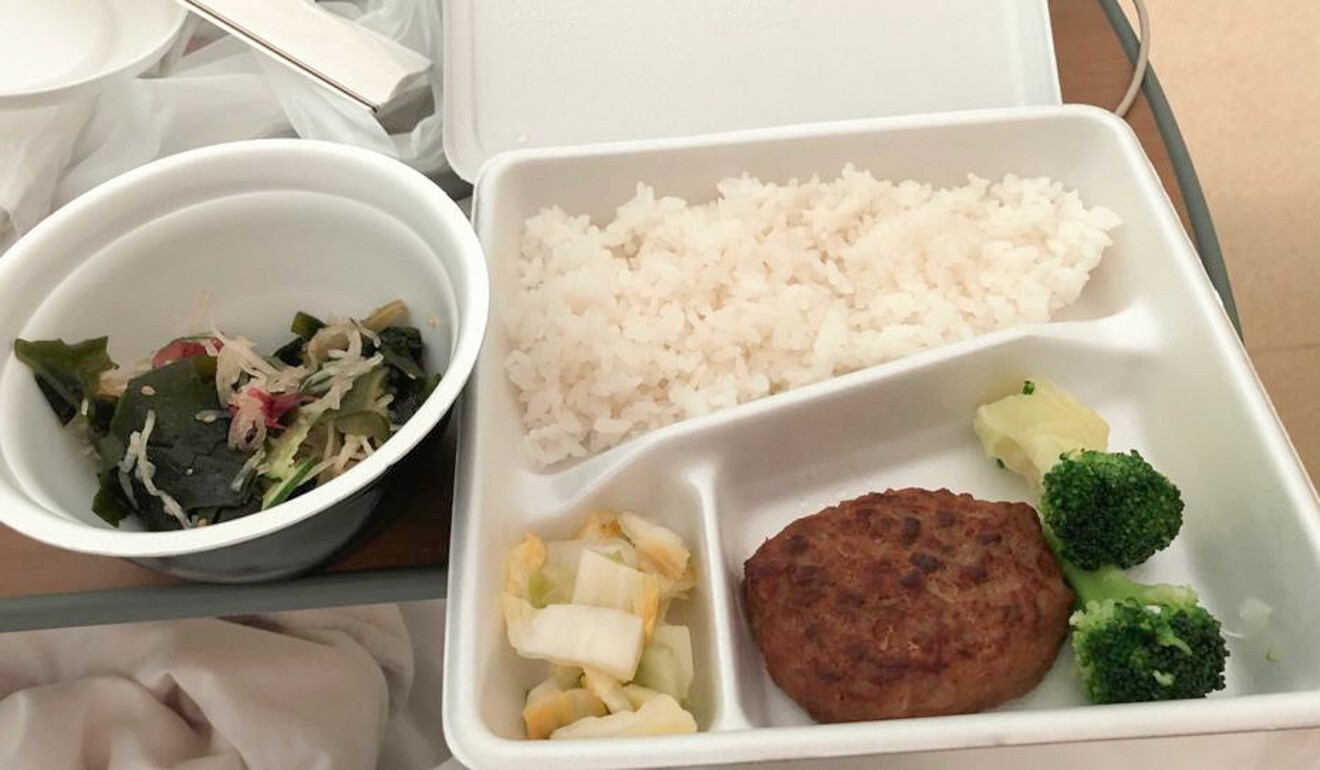
Covid-19 survivors: Hong Kong passengers relive time trapped on Diamond Princess cruise – first major cluster outside China
- Dentist recalls watching infection rates climb, relying on online information as city residents tested positive – sleepless nights followed
- Others, however, including 72-year-old Anna Au, say the experience won’t stop them from taking cruises in the future
When Lam Kwing-tong discovered he had Covid-19 antibodies in his bloodstream in late February, it came as a shock given his lack of symptoms. The 56-year-old dentist’s diagnosis at a quarantine camp in Hong Kong’s Sha Tin district, however, was only the culmination of an experience he now says was like “living in hell.”
Lam and his wife, Lau So-kuen, were among 364 Hong Kong residents on board the Diamond Princess cruise ship, where 712 people were infected and eight died, three Hong Kong residents among them.
The world’s attention was focused on the cruise ship back in February when it became the largest single cluster of the deadly coronavirus outside mainland China. It proved to be a premonition of things to come, highlighting how quickly the disease can spread.

02:21
Coronavirus: 106 Hongkongers return from infected Diamond Princess cruise ship in Japan
Since February, the coronavirus has swept the globe, infecting more than 28 million, with more than 907,000 dead. It has brought international travel to its knees, and a US$150 billion cruise industry that carried 30 million passengers a year has ground to a halt.
Ships infected with the coronavirus earlier this year were not allowed to dock, forced to sail aimlessly as they sought an open port that would accept them. Seven months later, the contamination problem remains, and some lines do not plan to sail again until 2021.
Fifth of city takes part in mass Covid-19 test; Hong Kong reports 12 new cases
In total, 85 Hong Kong residents on the Diamond Princess tested positive for Covid-19. Three who contracted the virus on the ship told the Post of a delayed reaction in trying to control the outbreak, a lack of information and being so desperate for fresh air that passengers would sneak on deck despite the risk of infection.
Two months after returning home, Lam would still lay awake at night, unable to sleep.
“After the experience, I was psychologically and physiologically affected,” says Lam, whose doctor prescribed the couple sleeping medication to deal with the stress.

While Wu and about 130 other passengers disembarked at Hong Kong’s Kai Tak Cruise Terminal on January 25, Lam, his wife, and about 360 others were boarding. Among them were 63-year-old housewife Vivian Li, 72-year-old Anna Au and four of their friends, who were looking forward to spending their Lunar New Year holiday together.

“I am getting older, so I was excited to go on holiday with my friends,” said Au, who got a deal on three inner staterooms, with two people sharing each room.
A spokesman for the Department of Health told the Post they had relayed a message to Princess Cruises’ port representative on February 1, informing them of the confirmed case of Covid-19. However, nobody checked the email, it seems.
Princess Cruises’ chief doctor, Grant Tarling, who oversaw the response from California, told The New York Times he saw a social media post the next day, February 2, but did not order more urgent action because the patient was already off the ship.
“Subsequently, the Centre for Health Protection also informed the Japan authorities of the details at around 1am on February 2,” the spokesman said.

06:11
Hong Kong dentist in quarantine onboard the Diamond Princess
On February 3, the Diamond Princess docked in Yokohama, and Captain Gennaro Arma, from Sorrento, Italy, announced via the ship’s intercom that a passenger had been infected.
Lam says he was shocked when he heard the news, but upon hearing Japanese medical teams would be boarding the ship to check temperatures and test some passengers for the virus, he felt better.
“We were hoping it would be fine,” he said.
However, no restrictions were placed on passengers until about 11pm on February 3. Even after the Japanese government requested that people stay in their rooms while awaiting test results, passengers still moved about the ship and ate meals at buffets.
On February 5, when the first lab results came back, Japan reported 10 people had tested positive, and ordered a ship-wide quarantine for 14 days.
Two Hong Kong residents infected on Diamond Princess cruise die in Japan
Lam, who had lived through Hong Kong’s severe acute respiratory syndrome (Sars) epidemic 17 years ago, began to worry on February 3 when two members of the health team came into his room wearing surgical masks but no other protective gear – something that jumped out to Lam as a red flag given medical training.
Lam and his wife’s temperatures were taken with a digital ear thermometer, but the men did not use a disposable cover, or clean the thermometer between uses, he said.

At first the captain made daily announcements of the number of cases, but as the infection’s spread peaked around day seven of quarantine, the announcements stopped.
“One day there were 100 cases. Afterwards, the captain stopped reporting the number of cases, so we didn’t know,” says Lam, who was forced to follow the news online to find out what was happening.

While crew members wore masks and gloves, they risked spreading – or contracting – the virus whenever they opened stateroom doors and passed in trays of food. Lam said food only began being delivered in takeaway containers on February 18, the fourteenth day of quarantine.
On February 12, Lam told the Post: “I can assure you in the coming days, the number of cases will increase.”
His prediction was swiftly proved correct, as he and his wife watched with dread as the number of cases continued to climb.
The couple never left their stateroom. It had a balcony, the door to which they left open for fresh air, while stuffing towels under the inner door to stop the air from inside the ship getting into the room.

02:26
Coronavirus infections nearly double on Diamond Princess ship stranded in Japan
Below the Lams, on deck 20, Li and her five friends were also confined to their rooms. Au’s room had a small window, but it was often blocked by the lifeboat, and was too small to see out of. Her only recreation was playing cards in her friends’ rooms.
“It was like being in jail,” said Li, whose room did not have a window at all.
The 63-year-old was so desperate for fresh air, she would sneak onto the deck when the captain announced that passengers staying on other floors were allowed to go out for exercise.
“I wasn’t afraid of getting infected. I just needed to breathe fresh air,” she said.
Japanese officials said they did the best they could in the fast-moving situation, as they tried to keep the virus from spreading within the country.

Japanese authorities handed out digital thermometers to everyone during the third day of quarantine, and the group took their temperatures every day. At 6am on February 11, Li’s temperature spiked to nearly 38 degrees Celsius. After reporting it to the medical team, she was told a lot of passengers had fevers and to wait until a doctor was available.
After 18 hours, a doctor came to her room to check on her, and the following day she provided a deep-throat saliva sample to test for the disease. Her roommate, who did not have a fever, was not given a test. On February 16, Li was confirmed positive for Covid-19 and told to pack her belongings.
She felt relieved to finally be able to leave her room, and was taken to Chiba East Hospital, east of Tokyo.
Li spent 19 days in hospital, where she passed the time by sleeping and watching videos on her phone. Her son flew to Japan and stayed in a nearby hotel, but could not visit her. After X-rays showed her lung function improving, and she received a negative Covid-19 test, the 63-year-old flew back to Hong Kong on March 5.

Au did not have any symptoms, but being over 70, the Japanese medical staff told her she needed to be tested. The 72-year-old was confirmed positive on February 17 and taken to hospital the next day.
“I was so happy to be able to see the sunshine out of the window,” said Au, who spent a week, symptom free, at Fujita Health University Hospital, 340 kilometres east of Tokyo. She flew back to Hong Kong on March 4. One other friend from the group also contracted the coronavirus and spent time in hospital in Japan, but declined to be interviewed. The other three companions tested negative.
Hongkongers stuck on the Diamond Princess struggle with boredom, infection risk
Lam and his wife both received their own negative results on February 21, and were repatriated to Hong Kong that evening. Considered a high-risk group, the couple were still required to undergo a 14-day quarantine at the government centre in Sha Tin. Upon arriving at the camp, Lam said he felt relief: “When I was on the cruise, it was like living in hell.”
His first tests were clear, but on the seventh day of quarantine, a blood test revealed that Lam had the virus, and antibodies in his bloodstream.

Infectious disease specialist Joseph Tsang Kay-yan agreed this was the best practice.
“Since this infection is still new to us, we are still studying the virus as well as the immune response … You cannot predict how long your immunity lasts when it comes to Covid-19,” he said.
Tsang expects cruises to remain a high-risk form of transportation for the next one to two years, until a vaccine is widely available.
But cruise companies and travel agency networks say bookings for 2021 are rising. Some, however, can be attributed to cancellations this year that were automatically rebooked.
All passengers on the Diamond Princess have been offered a free cruise in the future, but Lam and his wife will not be taking it up any time soon. However, Au says she would like to go on a cruise again with the same group of friends – aside from Li, who did not like being on the water for so long.
“I’m old now, so I’ll risk it.”

